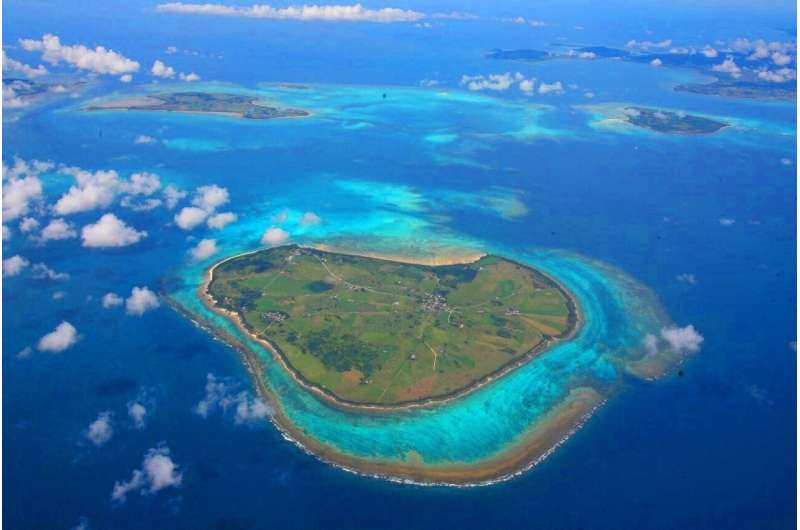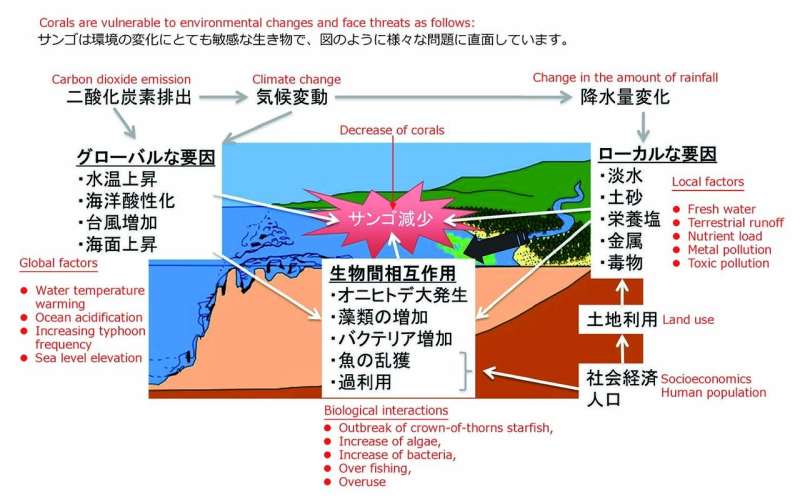Video is not always effective in science communication, study suggests

Audiences shown a video about coral reefs had less willingness to pay (WTP) for conservation than when shown a slideshow of texts and photographs. The findings suggest the importance of the type and amount of information used in science communication.
Garnering public support
The type and amount of information are critical for science communication. Following the adage, "a picture is worth a thousand words" and the rise of social media, photographs and videos are replacing text. However, regardless of the media, too much information can confuse the public and actually discourage support for a cause.
In a new study published in Ecosystem Services, researchers from the Nagano Environmental Conservation Research Institute (NECRI), Research Institute for Humanity and Nature, and five other Japanese institutes found this very effect on the willingness to pay (WTP) for hypothetical initiatives to conserve coral reefs in Japan.
Information about the reefs was provided as 1) none (NoInfo), 2) 12 slides containing 300 words and 15 photographs (SHORT) , 3) 14 slides containing 700 words and 20 photographs (LONG), or 4) a two-and-a-half minute video with music, 200 words and 19 photographs in 23 slides (VIDEO).
Unexpectedly, the study found that while both SHORT and LONG audiences had higher WTP than the NoInfo audience, the VIDEO audience had less. Audience members for all groups consisted of working-age residents across Japan, with more than 10,000 people participating.
Videos were too long
Dr. Takano Kohei of NECRI and a co-author of the study thinks the video demonstrates that less the type of media, the quality of the presentation is key.
"We made a bad example," he says. "The video was too long and did not summarize the main points well."
Indeed, 25% of the VIDEO audience did not even watch the entire video. In contrast, SHORT and LONG audiences consumed their information within a minute, suggesting a maximum time in which the public's WTP can be recruited. Further, the slides for the two slideshow audiences included a schematic diagram of the topic, which was not included in VIDEO.
The slideshow audiences actively consumed the information, as they could proceed to the next slide by clicking a button. In contrast, VIDEO audience was passive, with the video proceeding without their intervention.
"If you missed something in the video, there was no chance to review it. In the slides, you could go forward if you were happy with your understanding," Takano says, suggesting that having control of the information consumption could have had an effect on the WTP.
Takano recommends that for problems related to the environment, science communication should give concerted thought to the length of the information as well as allow the audience to consume the information at their own pace.

Materials and methods
The survey was conducted online on February 2014. The questionnaire was sent to 86,149 potential respondents registered with research companies and aged between 20 and 69 years-old from all prefectures in Japan. The potential respondents were sampled to fit ratios for gender, age, and the population of six broad geographic areas in order to generalize to the larger Japanese population. Consequently, 10,573 valid responses were obtained (the response rate was 12.3%). The respondents were randomly provided with one of the four kinds of information about coral reefs before a choice experiment which evaluates their WTPs for coral reef conservation.
Additional findings
The authors recognized three groups in the respondents by statistical analyses (a latent class logit model framework). "High-WTP group", consisting of about 60% of respondents, had a willingness to pay 6,521–8,288 Japanese Yen (100 JPY is about 1 USD) per person per year. "Low-WTP group," comprising about 30% of the respondents, were willing to pay 196-245 JPY. "No-additional-conservation group," consisting of about 10% of the respondents, were not willing to pay any amount. A respondent of the high-WTP group was more likely to be a woman, older, and had a higher income level compared with the no-more-conservation group (the reference group). A respondent of the low-WTP group was more likely to be a woman, compared to the reference group.
Limitations of the study
In the SHORT, LONG, and VIDEO information, exactly the same elements were not used. It is unavoidable to some extent but made difficult to interpret the effect of the VIDEO information. Overall, the authors assumed three potential reasons for the lowest WTP in VIDEO audience: 1) insufficiency of textual explanation, 2) lack of a schema, and 3) too long duration time. It would be necessary to pursue effective and efficient amount and type of information to raise awareness of public goods.
More information: Ecosystem Services, DOI: 10.1016/j.ecoser.2020.101166
Provided by Research Institute for Humanity and Nature



















